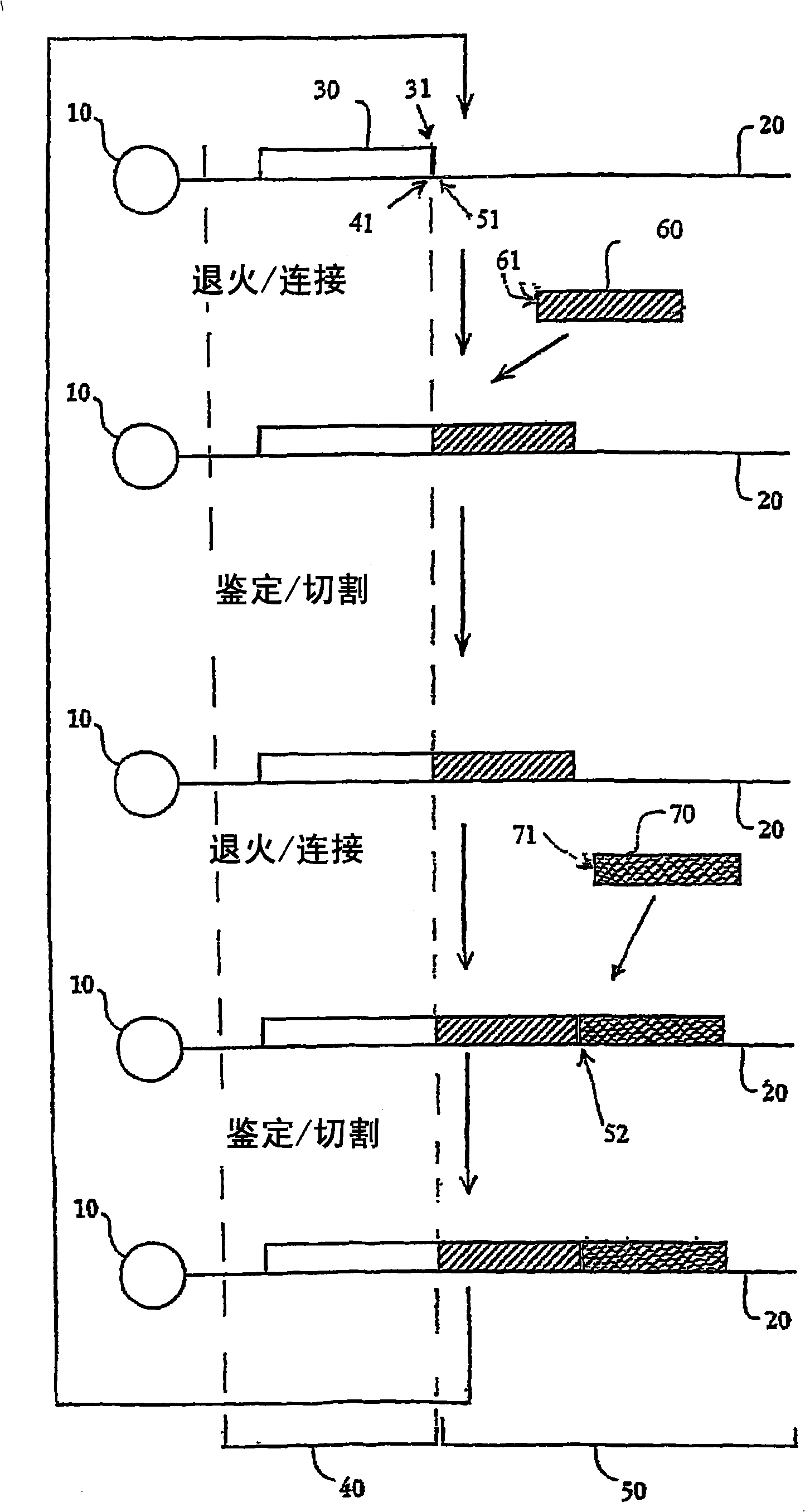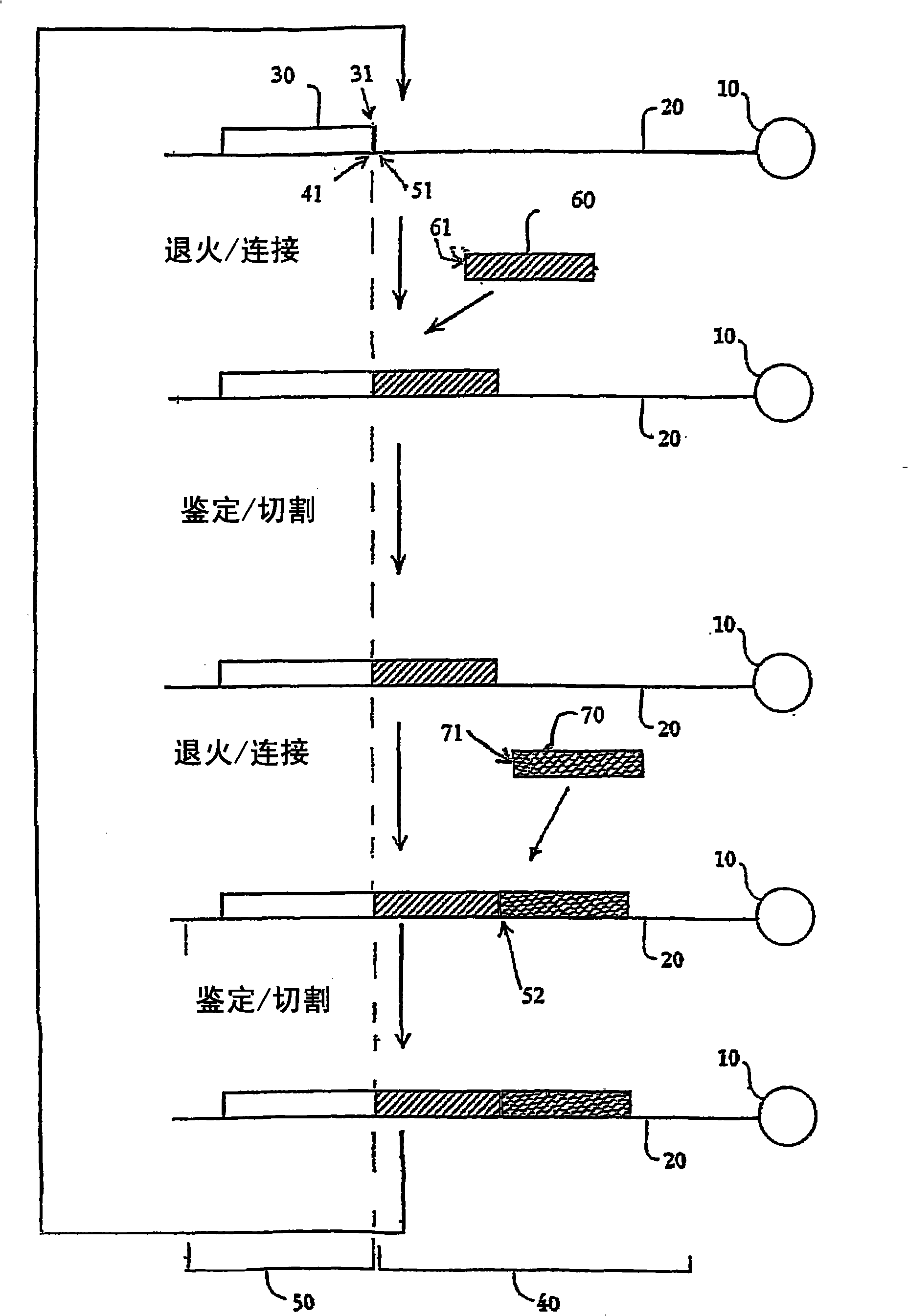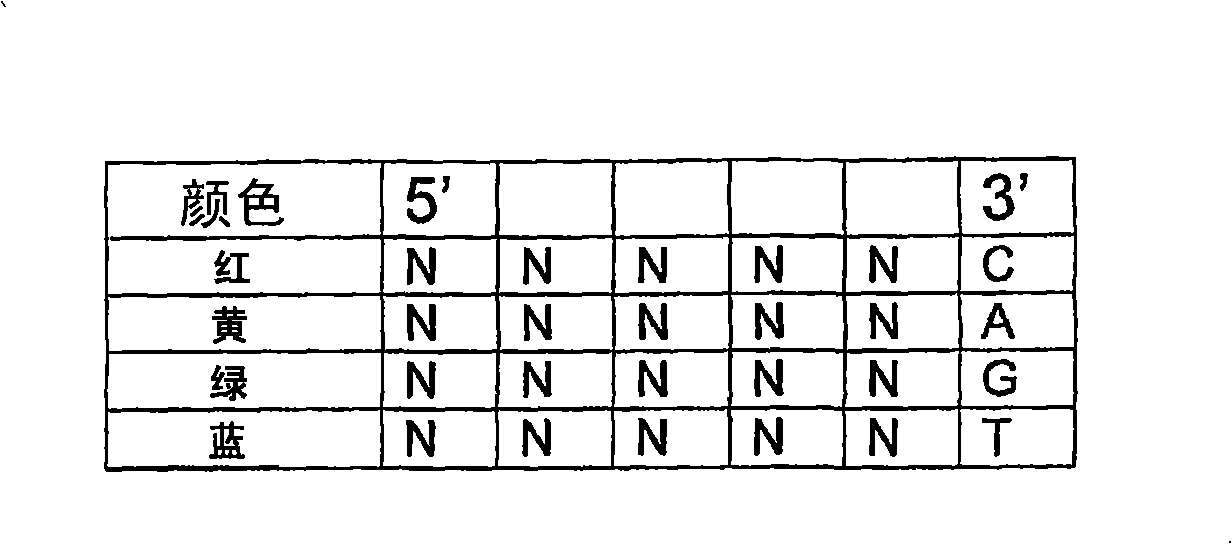Reagents, methods, and libraries for gel-free bead-based sequencing
A substrate and sequence technology, applied in the field provided by the invention, can solve the problems of restricting wide application and errors in highly similar sequences
- Summary
- Abstract
- Description
- Claims
- Application Information
AI Technical Summary
Problems solved by technology
Method used
Image
Examples
Embodiment 1
[0260] Example 1 provides an exemplary protocol.
[0261] Sequencing can be performed in the 5'→3' direction with an extension probe containing a 3'-O-P-S-5' junction. Figure 5A shows the use of 5'-O-P-O-X-O-P-S-NNNNN B * -One cycle of hybridization, ligation and cleavage performed by the extension probe in the 3' form, where N represents any nucleotide, and N B Represents the part that the ligase cannot extend (such as N B is a nucleotide lacking a 3' hydroxyl group or having a blocking moiety attached), * Represents a detectable moiety, and X represents a nucleotide whose species corresponds to the detectable moiety. Alternatively, a bulk blocking moiety can be attached to the 3' terminal nucleotide to prevent multiple ligation. For example, attaching a bulky group to, for example, the 2' or 3' position of the sugar moiety of the nucleotide will prevent ligation. Fluorescent labels can be used as suitable macrogroups.
[0262] A template comprising a binding region 40...
Embodiment 2
[0446] Example 2: Efficient Cleavage and Ligation of Phosphorothioated Oligonucleotides Containing Nucleotides with Reduced Degeneracy
[0447] However, another consideration for probe length is the fidelity of the extended oligo and its impact on subsequent ligation efficiency. The fidelity of T4 DNA ligase has been shown to decrease rapidly after the 5th base after the junction (Luo et al., Nucleic Acids Res., 24:3071-3078 and 3079-3085, 1996). If a mismatch is introduced on the 5' side of the newly ligated junction, ligation efficiency can be reduced by depletion, however, without a phase shift or increase in background signal (a major hurdle encountered in polymerase-based sequencing by synthetic approaches). ).
[0448] Preferably, the probe set should be able to hybridize to any DNA sequence in order to resequence uncharacterized DNA. However, the complexity of labeled probe sets increases exponentially with the length and number of 4-fold degenerate bases. Furthermor...
Embodiment 3
[0453] Example 3: Fidelity of Probe Ligation
[0454] Bacterial NAD-dependent ligases such as Taq DNA ligase have been reported to have high sequence fidelity at the ligation, with essentially no nick-closing activity for mismatches on the 3' side but some tolerance for mismatches on the 5' side (Luo et al., Nucleic Acids Res., 24:3071-3078 and 3079-3085, 1996). On the other hand, T4 DNA ligase has been reported to be slightly less stringent, allowing mismatches at the 3'- and 5'-sides of the junction. Therefore, it was of interest to evaluate the fidelity of probe ligation with T4 DNA ligase compared to Taq DNA ligase in our system.
[0455] Using standard ABI sequencing techniques, we developed two methods to assess the sequence fidelity of ligated oligonucleotides. The first approach was designed to clone and sequence the ligation products. In this method, ligated extension products are ligated to adapter sequences, cloned and transformed into bacteria. Individual colon...
PUM
| Property | Measurement | Unit |
|---|---|---|
| diameter | aaaaa | aaaaa |
| diameter | aaaaa | aaaaa |
Abstract
Description
Claims
Application Information
 Login to View More
Login to View More - R&D
- Intellectual Property
- Life Sciences
- Materials
- Tech Scout
- Unparalleled Data Quality
- Higher Quality Content
- 60% Fewer Hallucinations
Browse by: Latest US Patents, China's latest patents, Technical Efficacy Thesaurus, Application Domain, Technology Topic, Popular Technical Reports.
© 2025 PatSnap. All rights reserved.Legal|Privacy policy|Modern Slavery Act Transparency Statement|Sitemap|About US| Contact US: help@patsnap.com



